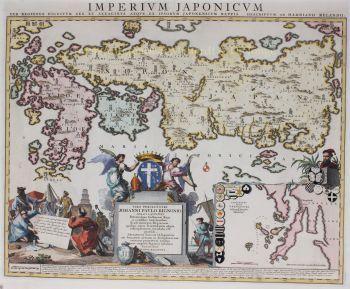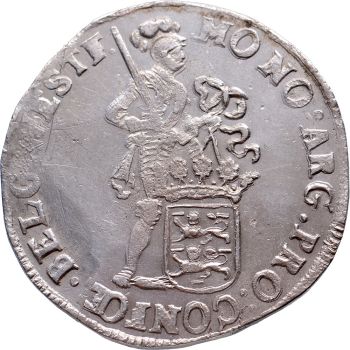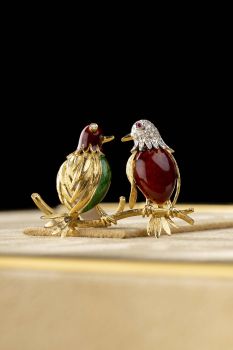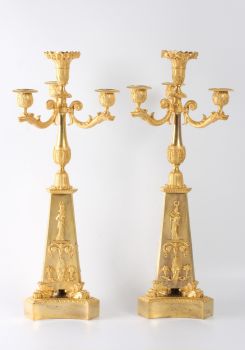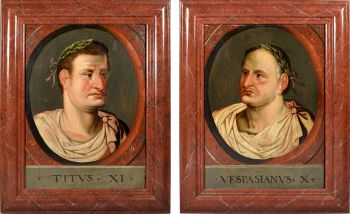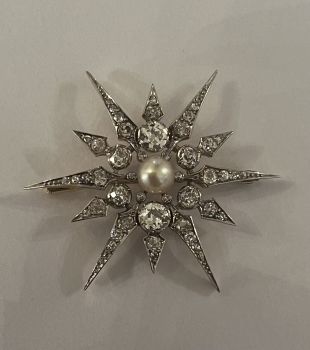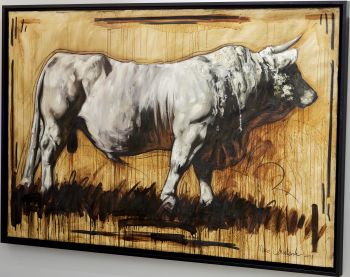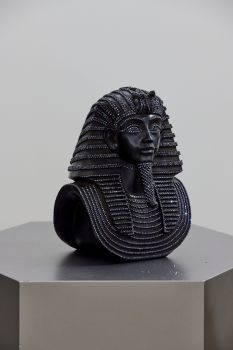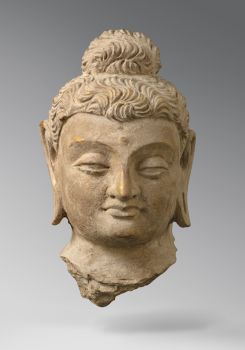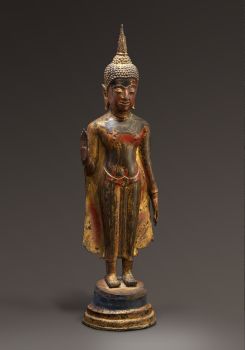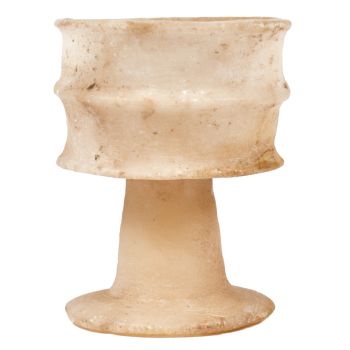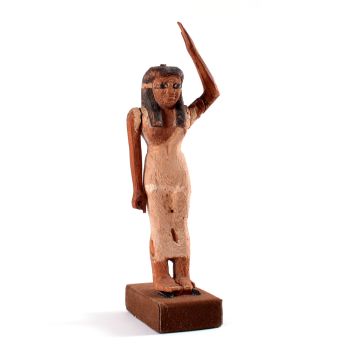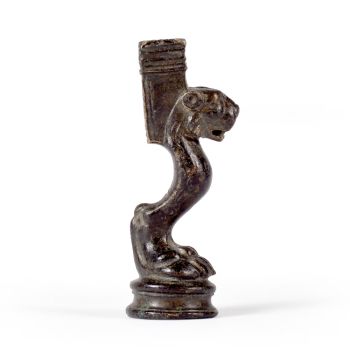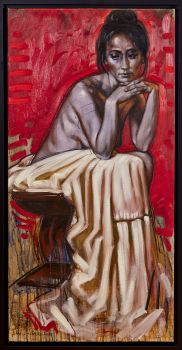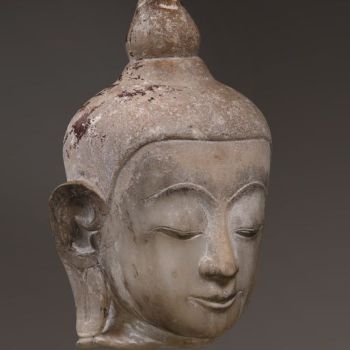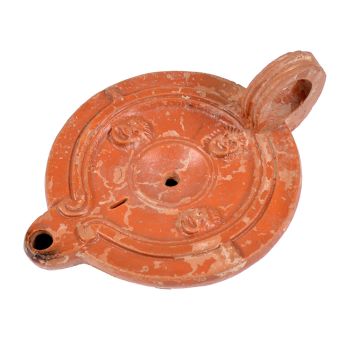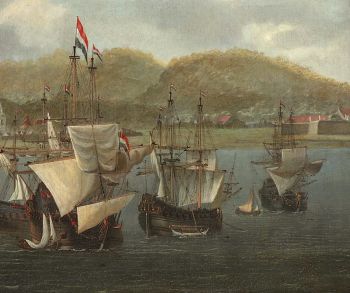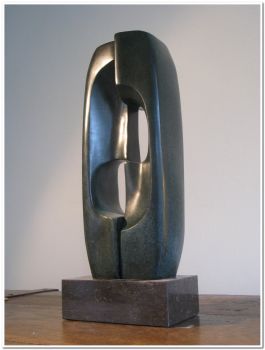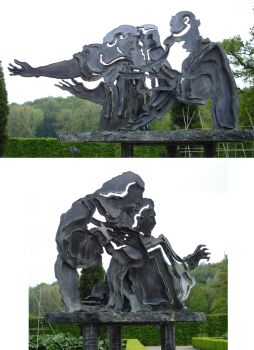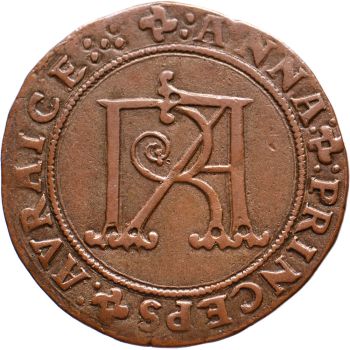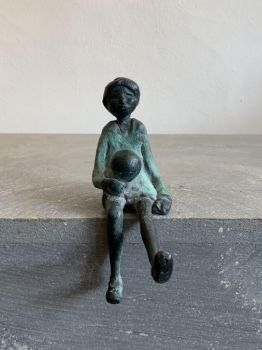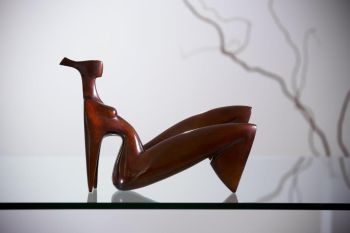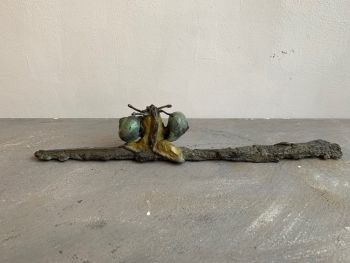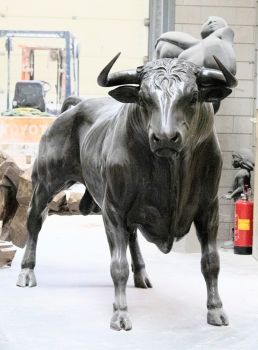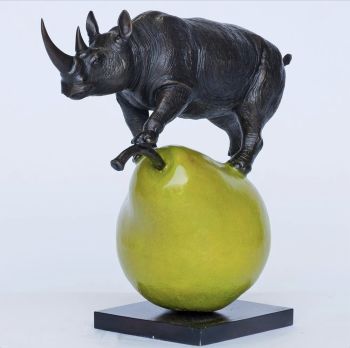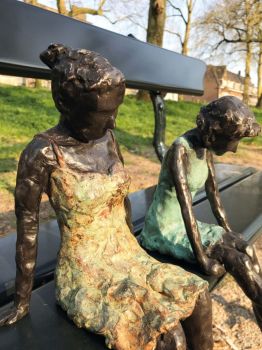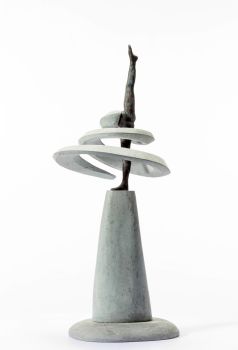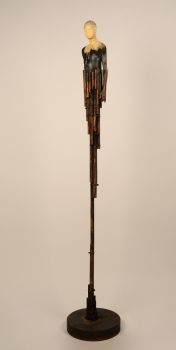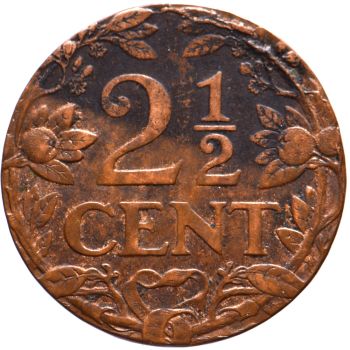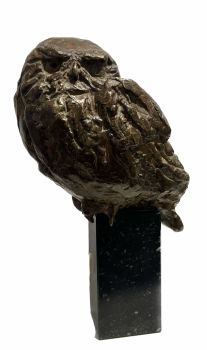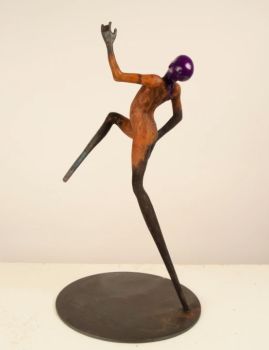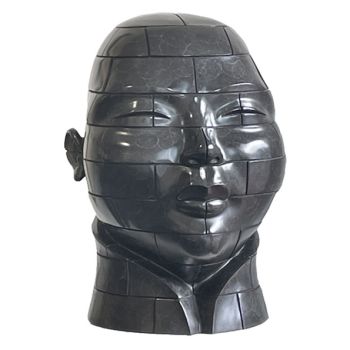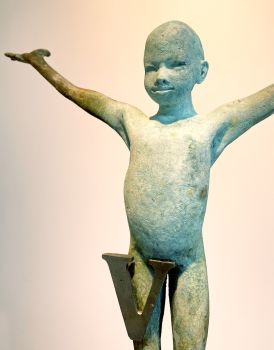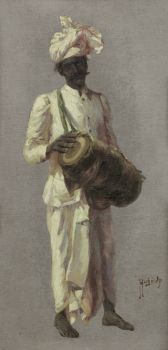The bell of the VOC fortress in Jaffna, Sri Lanka 1747
Artista Desconhecido
BronzeMetal
44 ⨯ 36 cm
Preço em pedido
Zebregs & Röell - Fine Art - Antiques
- Sobre arte
The bell of the VOC fortress in Jaffna, Sri Lanka, marked JAFFANAPATNAM Ao 1747 VOC Cast in Jaffna or Colombo, 1747 H. 44 x Diam. 36.5 cm In 1658 Rijcklof van Goens (1619-1682) conquered Jaffnapatnam, a crucial Portuguese town on the North-East coast of Sri Lanka, for the VOC. For an important portrait of him by Jürgen Ovens, see Uit Verre Streken, March 2018, no. 4. Within two decades of conquering, the Dutch built a new fortress at Jaffna overlooking the lagoon, as they considered the old Portuguese structure to be out of date. The new fort, built according to the Dutch notions, was provided with a new church named the Kruys Kerk, which was still in the fort as a museum in the 1990s. The two bells from the old Portuguese Church of the Lady of Miracles, one large and one small with legend ‘Nossa Senhora Dos Milagres de Jafanaptao 1648’ were hung in the new church. The smaller of the two continued to hang in the tower of the Jaffna church, but was eventually removed for safety and lodged in the vestry. The fortress has long been considered by historians and archaeologists to be one of the largest, strongest and best-preserved forts built by a European colonising power in Asia. However, during the severe struggle in the 1990s between the Tamil Tigers and the Sri Lankan army, which had a base in the old Dutch fort, the castle and the Kruys Kerk were largely destroyed. With financial aid from the Netherlands, the castle is being restored, but the church will unfortunately not be rebuilt. The present bell, with the VOC monogram and dated 1747, is likely to have been the bell of the belfry inside the fort or above the gate, used to call people to work, or to call the alarm. A bell with the monogram of a trading company is not very likely to have been a church bell to call people to church. Provenance: Stenton House on the River Tay, near Dunkeld, Perthshire. Stenton Estate belonged to the Scottish Stewart family. The original part of the house dated to the 17th century with extensions in the 18th and 19th centuries. Captain James Stewart (1784-1843), who died in Colombo, possibly took the bell from the fortress and sent it to the family estate in Scotland. The bell remained in Stenton House garden until the house was sold at the end of 2019.
- Sobre artista
Pode acontecer que um artista ou criador seja desconhecido.
Algumas obras não devem ser determinadas por quem são feitas ou são feitas por (um grupo de) artesãos. Exemplos são estátuas dos tempos antigos, móveis, espelhos ou assinaturas que não são claras ou legíveis, mas também algumas obras não são assinadas.
Além disso, você pode encontrar a seguinte descrição:
•"Atribuído a …." Na opinião deles, provavelmente uma obra do artista, pelo menos em parte
• “Estúdio de…” ou “Oficina de” Em sua opinião um trabalho executado no estúdio ou oficina do artista, possivelmente sob sua supervisão
• "Círculo de ..." Na opinião deles, uma obra da época do artista mostrando sua influência, intimamente associada ao artista, mas não necessariamente seu aluno
•“Estilo de…” ou “Seguidor de…” Na opinião deles, um trabalho executado no estilo do artista, mas não necessariamente por um aluno; pode ser contemporâneo ou quase contemporâneo
• "Maneira de ..." Na opinião deles, uma obra no estilo do artista, mas de data posterior
•"Depois …." Na opinião deles uma cópia (de qualquer data) de uma obra do artista
• “Assinado…”, “Datado…” ou “Inscrito” Na opinião deles, a obra foi assinada/datada/inscrita pelo artista. A adição de um ponto de interrogação indica um elemento de dúvida
• "Com assinatura ….”, “Com data ….”, “Com inscrição ….” ou “Tem assinatura/data/inscrição” na opinião deles a assinatura/data/inscrição foi adicionada por outra pessoa que não o artista
Você está interessado em comprar esta obra de arte?
Artwork details
Related artworks
- 1 - 4 / 12
- 1 - 4 / 15
Artista Desconhecido
Japanese transition-style lacquer coffer 1640 - 1650
Preço em pedidoZebregs & Röell - Fine Art - Antiques
Artista Desconhecido
Holandeses em miniatura18th century
Preço em pedidoZebregs & Röell - Fine Art - Antiques
Artista Desconhecido
Holandeses em miniatura (Netsuke)1700 - 1900
Preço em pedidoZebregs & Röell - Fine Art - Antiques
Artista Desconhecido
UM MODELO JAPONÊS DE UM NORIMONO, UM PALANQUIM1650 - 1700
Preço em pedidoZebregs & Röell - Fine Art - Antiques
1 - 4 / 24- 1 - 4 / 24
Artista Desconhecido
IMPORTANTE E RARA GRANDE PINTURA DE 'ESTILO DE EMPRESA' ÍNDIO EM MARFIM QUE REPRESENTA UM DESFILE1850 - 1900
Preço em pedidoZebregs & Röell - Fine Art - Antiques
 Com curadoria de
Com curadoria deDanny Bree
1 - 4 / 12







